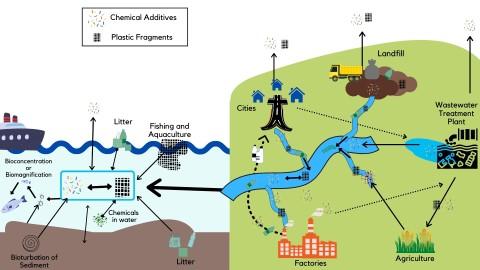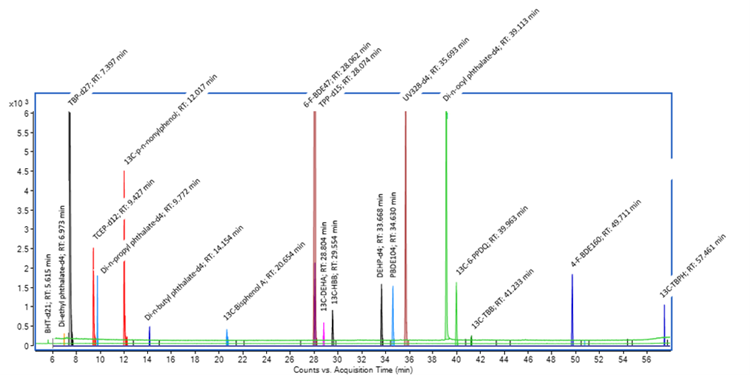Description

Sources and transport of plastic additive chemicals in the environment.
Plastic products are not “pure polymers'' as they consist of up to 70 % additive chemicals by weight. Plastic additives are mixed into the polymer matrix during production to enhance functional properties, performance, or appearance of the plastic product. The use of additives in plastics is extensive [1,2], covering a wide range of chemical classes such as colorants, light stabilizers, antioxidants, plasticizers, flame retardants, and heat stabilizers. Many of these additives can leach out of plastic products into the environment, and some can produce a range of negative effects in organisms if exposure exceeds the toxic threshold. While there has been an abundance of reports on microplastics in the marine environment in recent years, there is a lack of research addressing the environmental exposure of marine organisms, including seafood, to plastic additives.
NIST is developing methods to detect and quantify plastic additives in a variety of environmental sample matrices with two instruments: gas chromatography-mass spectrometry (GC/MS) and pyrolysis-GC/MS. A single injection GC/MS method is currently under development to quantify approximately 100 plastic additives from multiple chemical classes, including UV stabilizers, antioxidants, nonylphenols, specific monomers, phthalates, and brominated and phosphate-based flame retardants, using a mass-labeled internal standard approach. Uniquely, a double-shot method using pyrolysis-GC/MS can simultaneously detect additive chemicals from the first thermal desorption temperature ramp, while identities of polymers can be discovered in the second pyrolysis temperature ramp. NIST is testing the capability of a double shot method to accurately quantify additives and polymer masses in a sample simultaneously.

References:
[1] Andrady, Anthony L. Plastics and the Ocean: Origin, Characterization, Fate, and Impacts. John Wiley & Sons, Incorporated, 2022. https://onlinelibrary.wiley.com/doi/book/10.1002/9781119768432
[2] Megill, C., Shaw, K., Knauer, K., Seeley, M., Lynch. J. 2024. Plastic additives in the ocean: Use of a comprehensive database for meta-analysis and method development. Chemosphere.358:142172. DOI: 10.1016/j.chemosphere.2024.142172

